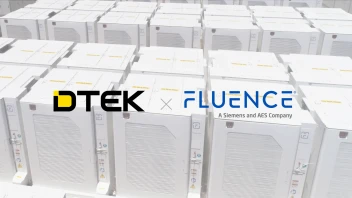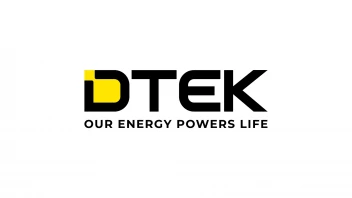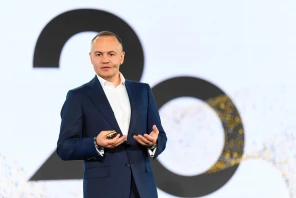The development of "green" banking in Ukraine creates additional opportunities for ecological modernization and decarbonization of the national industry. A tool like energy service allows you to implement these opportunities, enhance their impact and insure both bankers and company-borrowers against the risks. Tetyana Gryaznova, Director of Economics and Finance of YASNO Energy Supplier, shared her vision on what new niches and formats of investment cooperation may appear on the Ukrainian market in support of environmental projects.
Given the European Green Deal's ambitious goals of achieving climate neutrality by 2050, Ukrainian businesses must look at upgrading production now to meet stringent European requirements for reducing all emissions in the future.
Limited access to long-term funding remains a significant barrier, especially in the context of the ongoing Covid-19 pandemic. In addition, in the current environment many business owners do not risk investing in complex technology projects with a payback period of more than two years, even if they are obviously profitable.
In this case “green” banks help to open access to capital by providing targeted financing and more loyal commercial conditions for the implementation of eco-projects. Meanwhile energy service companies (ESCOs) help solve several issues at once: identifying the most profitable and quick-payback modernization projects, financing them without collateral and commissions, implementing them on a turnkey basis, as well as guaranteeing a reduction in energy consumption for several years to come.
At the same time, energy service as a comprehensive solution for businesses provides high return on investment and stable cash flow, allowing to free up resources of customers' companies by improving their energy efficiency.
It may seem that “green" banks and ESCOs are competitors in terms of financing. But in reality, they are potential partners that can scale each other's activities, open a new niche in the market and make a joint contribution to achieving climate goals.
Cooperation options
Cooperation between ESCOs and “green” banks can take several formats.
Under the classic model, ESCO can independently finance and implement a turnkey energy-efficient project at an industrial facility, ensuring a reduction in the company’s energy costs from 25% to 90%. Guaranteeing the achievement of a certain level of savings, ESCO receives a return on its investment in the form of regular payments during 4-5 years at the expense of a part of the funds saved by the client. After this period, the company-customer gets to retain 100% of its savings, all improvements and new equipment. If the projected indicators are not achieved, the client still keeps the equipment, while ESCO loses its investment.
Cooperation with a bank can take the form of refinancing an already implemented project. The financial institution can join the project with already confirmed savings and cash flow from the client - energy service payments, the risks in this case will be minimal.
Another possible option is when ESCO finds a potentially profitable energy efficient project and offers it to a bank for funding, assuming the risks of achieving savings, and covering all technological issues: choosing solutions, purchasing equipment, and ensuring its installation and commissioning.
The opposite situation may occur when a bank has a client with interesting projects, but without sufficient collateral. In this case, the bank may invite an energy service company to implement the project, the latter will remain the owner of the equipment for several years, providing it as collateral and backing it with guaranteed cash flow.
There may very well be a place for a configuration of factoring relationships of a bank, ESCO and a company. ESCO, having implemented the project and confirmed its saving, can transfer the right to demand payment at the expense of a part of the funds saved by the client to the bank.
Profit for three
In addition to the models described above, of course, there are other options for joint work of a "green" bank and ESCO. However they are based on the fact that customer investments should be minimal - about 10-30% of the cost of an energy-efficient project, and the profits should be significant and guaranteed. In essence, ESCO and a bank buy customer’s energy inefficiency, monetizing it and turning it into income for all three parties.
What other benefits and income can we talk about? Let’s take a look at the portfolio of 87 energy service projects of YASNO, a supplier of electricity, gas and energy efficiency solutions.
With YASNO's investments in the amount of UAH 550 million, the amount of energy service contracts is almost UAH 2 billion, which is the amount of customer payments due to the savings achieved over several years. The average payback period of the energy service projects in the YASNO portfolio is 2-3 years. And the term of such contracts is 4-5 years. However if the payback comes sooner than planned, the contract can also be completed sooner.
Energy savings in YASNO projects range from 25% to 90% depending on the technology. For example, about 70−90% savings are provided by the modernization of lighting systems with the transition to LED-lamps. From 25% to 50% of electricity can be saved using frequency converters for equipment with electric motors - pumps, industrial ventilation, conveyors. From 25% to 63% of customers’ savings in thermal energy are achieved through the modernization and automation of heating systems in buildings. About 35% of natural gas is saved by metallurgical customers by installing "smart" burners on their heating equipment.
The ecological effect of YASNO's energy service investments is based on the fact that the reduction of electricity consumption by 171 million kWh amounting to UAH 350 million per year also allows industrial customers to reduce their CO2 emissions by 153,000 tons per year.
An important signal
A fresh positive signal for the further development of the “green” investment market in Ukraine was the signing of Cooperation Agreement between the National Bank of Ukraine and the International Finance Corporation (IFC) on Development of Sustainable Finance in April 2021.
The agreement stipulates that the NBU will develop strategies and standards for "green" financing, while the principles of sustainable development (ESG) will be implemented in regulations and requirements for corporate governance in banks.
Potentially, this may mean that in addition to loan portfolio profitability and liquidity indicators, banks will need to implement ESG metrics in their lending and investment processes. And environmental consequences and risks will be assessed more rigorously when evaluating the borrower and the project.
It is possible that over time, additional standards will appear for the share of issued "green" loans in the total investment portfolio of each bank. Therefore, financial institutions already need to look into developing a pool of projects for decarbonization, including in the field of energy efficiency. Energy service companies can act as banks’ qualified partners in this area.
The environmental attractiveness of investments in energy optimization compared to other types of "green" investments is highlighted by the fact that every 1 million euros of YASNO ESCO investments on average helps the customers reduce annual electricity consumption by 11.5 million kWh, which is equivalent to reducing CO2 emissions by 10.2 thousand tons. For comparison, the same amount needs to be invested to get 1.2 million kWh of "green" energy at solar power plants or 3.5 million kWh at wind farms. Meanwhile, energy service projects do not require special licensing, land allocation, construction of additional infrastructure, and additional guarantees from the state.







